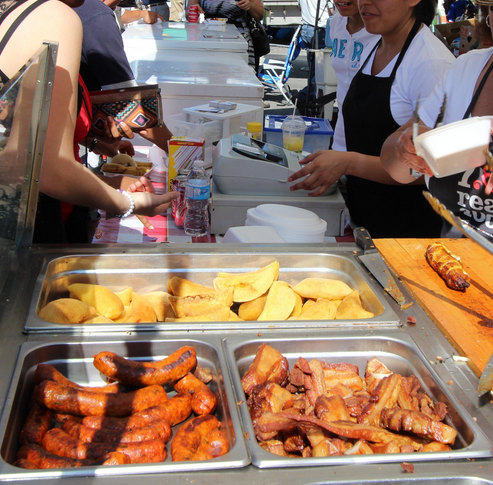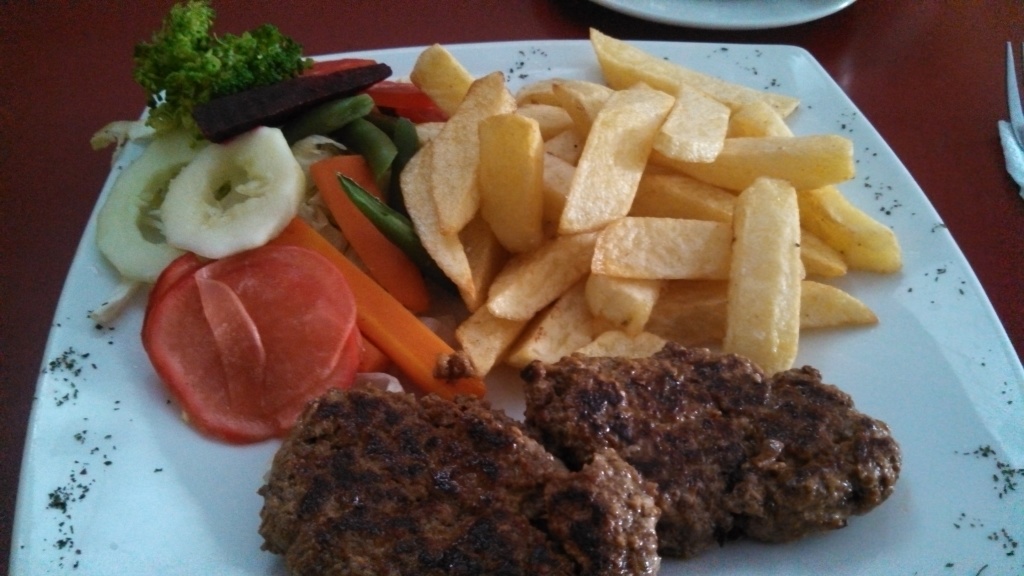“More than 50,000 cases of fish-related food poisoning during travel occur each year – and that’s only one food group.”
– USA Today

Foods you should never eat while traveling
One of the big problems with Lonely Planet books is their scope. You can’t fit an entire country into 580 pages. As such, anywhere that isn’t home to a major tourist attraction gets glossed over. Right now I’m in Ica, a small city with a population between 100,000 and 200,000.
While Ica isn’t huge, it is about the size of most metropolitan areas in the Midwest. Yet my Lonely Planet guidebook only lists five restaurants in the whole city. And one of those is a bakery.
In the U.S. this wouldn’t be a big deal, but overseas it can be a major problem. Food safety isn’t a huge concern in other countries. Meat is left out in the open, things that fall on the ground are put back on plates, and some kitchens lack running water.
You’re always one plate of anticuchos away from a week of gross intestinal issues.
Having not gotten sick during my first three months of living here, I wanted to give a few pointers that can save you, and your underwear, from the effects of food poisoning. Below are a handful of foods that you should never eat while traveling:
Fruit
Buying fruit on the street and eating it while you walk is not a good idea. A lot of stuff isn’t washed and, in some countries, is stored in unsafe environments. While traveling through Nicaragua I bought some mango slices that made me ill. After recovering I learned that the cut up mangoes were all thrown into a five gallon bucket and left out in the hot sun all day. Buying fruit from a street vendor, especially if it is pre-sliced, is not a good idea.
Ice cream
When it comes to ice cream and milkshakes I’d play it safe and avoid both. Prepackaged cones or popsicles are fine, but anything sold by street vendors could easily get you sick. Also, shakes at places like Burger King or local fast food joints are probably not a very good choice.
An ice cream parlor is fine, but buying a cone from some guy on the street isn’t the wisest idea.
Fast food
In Lima there are always American backpackers who go to Burger King or McDonald’s assuming that they won’t get sick from Western food. They end up eating burgers, chicken nuggets, and chocolate milkshakes.
Then they still fall ill.
Fast food places are unsanitary in America and they’re just as bad overseas. The only difference is that you’re used to eating American mildew and drinking sodas with American feces in them. You’ve built up a tolerance over the years.
Foreign mold and bacteria isn’t something you’re accustom too. You’ll end up getting sick.
Smoothies
These won’t get you sick, but they can be really gross and misleading. In the United States smoothies are usually a healthy drink. In Peru, and other nations, they are full of sugar. There’s a place here that blends up all kinds of delicious fruits, and then pours maple syrup in with them to make it sweeter.
Chugging Mrs. Buttersworth and pineapple juice doesn’t taste too good and it makes your teeth feel scuzzy afterwards.
Where to eat

Go to places where middle class locals dine. You’ll be pretty safe there and the food won’t be expensive. In a lot of poorer neighborhoods people eat at very dirty restaurants or buy food off special handcarts. I’ve seen vendors at these pet dogs before touching ingredients and witnessed someone drop meat into a mudpuddle only to put it back on a plate.
Don’t eat at venues like these. That might sound like common sense, but I see a lot of granola munching backpacker weirdos who want to try food from these places for an “authentic” experience. They all contract horrible diarrhea.
Lastly, a lot of these locals only joints don’t like tourists. I went to one a few days ago, it was the only place that was open, and was given a totally different price than the regular customers. There’s something called “Gringo Tax” and you’ll be paying it.
Most countries have a much better alternative to these hole in the wall type places. In Latin America there are plenty of little restaurants called menus. These have a daily special that runs about $5 and contains some type of meat, carbs, vegetables, and a drink. These places are also run by people who take their craft very seriously and aren’t going to be serving up rancid meat that fell on the floor.
You still get to save money and eat an authentic meal, but you also aren’t risking some horrible illness for the sake of a cultural experience.